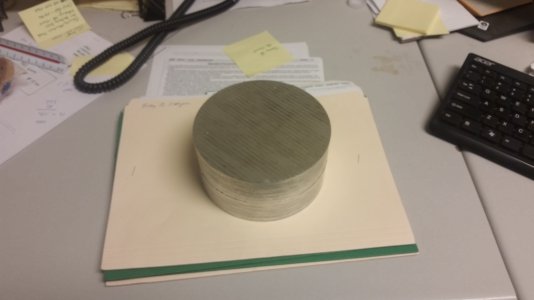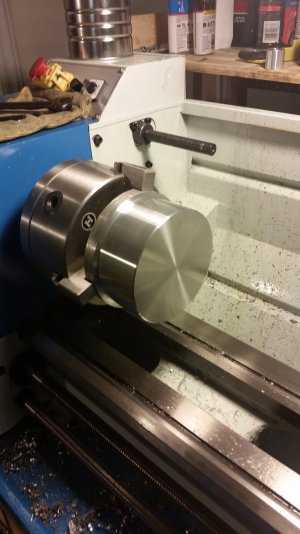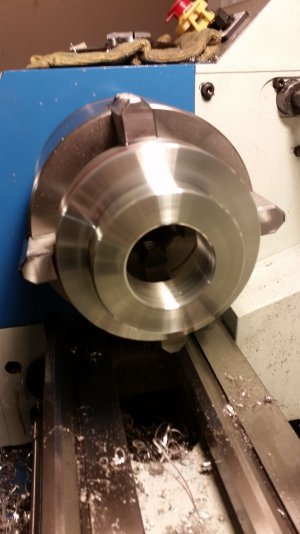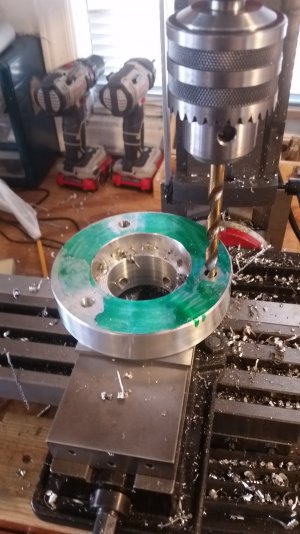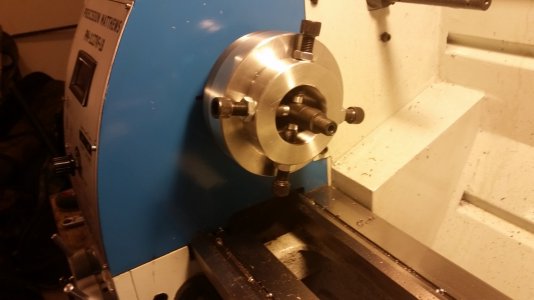Well, the new PM1127VF-LB has been more fun than I could have imagined. I got it all cleaned up and even broke down the cross slide and cleaned/ lubed / adjusted everything until it was to my liking.
I decided that I needed to build a spider nut in hopes of eventually chambering a barrel, or even if I need to thread something really long that will need the support on the outboard side of the headstock.
As best I can tell, the 'official' spindle thread pattern is 48mm x 1.5mm. I measured the OD of the existing and it is 1.875" = 47.625 mm. .375 mm = .015", so I figured that gives about .007" per side for flat tops on the threads. With this information, I took a piece of 2" aluminum round stock and turned a copy of the spindle. Then I checked it with the spindle nut and it actually fit!
Next step was to turn the nut. I wanted it to fit through the side of the gear box cover so that I could run the lathe with the gear box cover in place. There is a nice 2.5" hole from the factory in the gear box cover that actually centered over the spindle hole. So, I turned a 2.400" OD for the nut, threaded the internal threads to have a minor diameter of 1.837", drilled and tapped (4) 5/16-18 holes, and then milled (2) notches for the spanner wrench. I am really happy with how it turned out. Tell me what you think.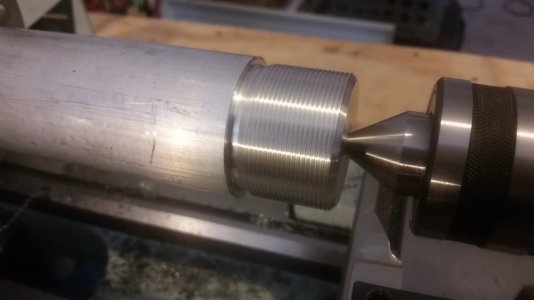
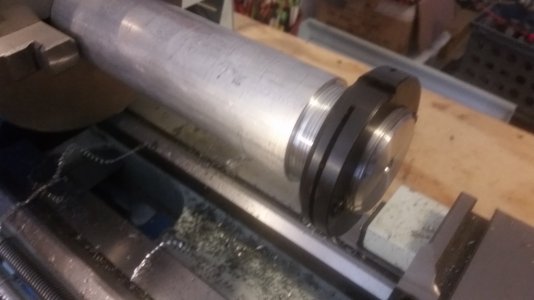
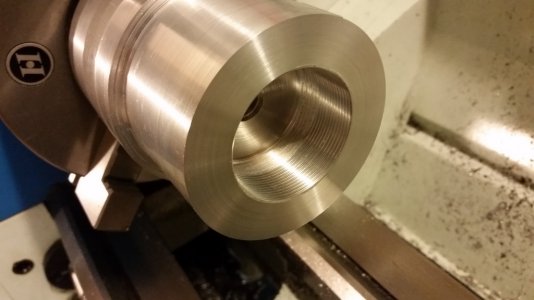
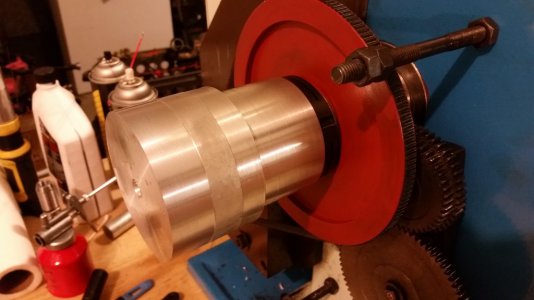
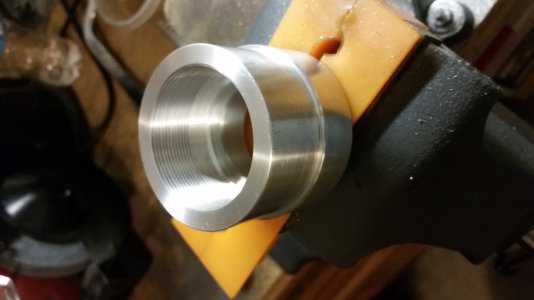
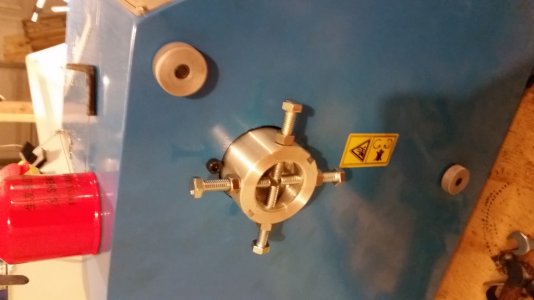






I decided that I needed to build a spider nut in hopes of eventually chambering a barrel, or even if I need to thread something really long that will need the support on the outboard side of the headstock.
As best I can tell, the 'official' spindle thread pattern is 48mm x 1.5mm. I measured the OD of the existing and it is 1.875" = 47.625 mm. .375 mm = .015", so I figured that gives about .007" per side for flat tops on the threads. With this information, I took a piece of 2" aluminum round stock and turned a copy of the spindle. Then I checked it with the spindle nut and it actually fit!
Next step was to turn the nut. I wanted it to fit through the side of the gear box cover so that I could run the lathe with the gear box cover in place. There is a nice 2.5" hole from the factory in the gear box cover that actually centered over the spindle hole. So, I turned a 2.400" OD for the nut, threaded the internal threads to have a minor diameter of 1.837", drilled and tapped (4) 5/16-18 holes, and then milled (2) notches for the spanner wrench. I am really happy with how it turned out. Tell me what you think.














